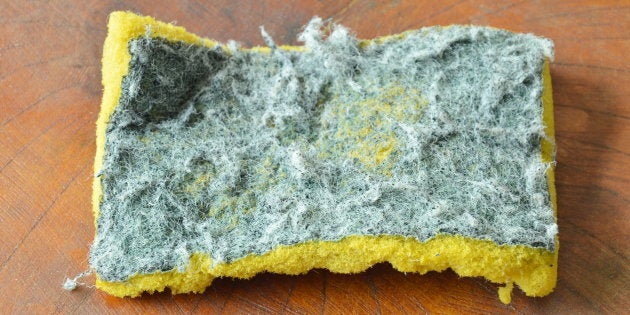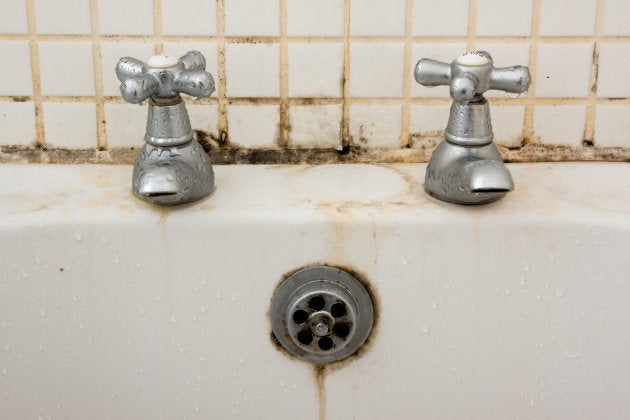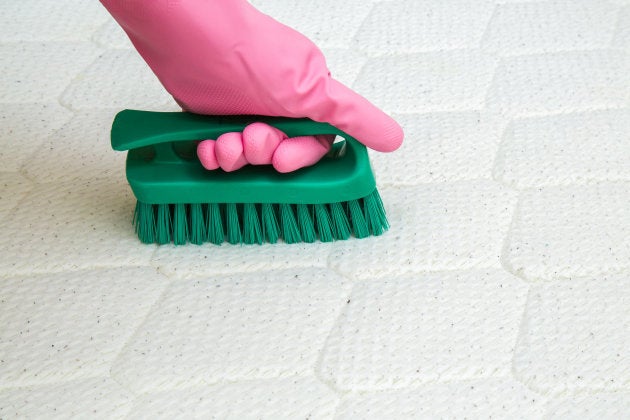
How do I rescue a scorched pot?
If you've burned food onto the inside or outside of your favourite saucepan, you don't have to give up and toss it. The solution may be as simple as baking soda and boiling water. Jezebel recommends covering the bottom of the burned pot with a lot of baking soda then pouring the hot water over the soda and finally, washing it with soapy water.
But if that doesn't work, give Barkeepers Friend and/or Bon Ami cleaning products a try.
Going forward, keep this helpful infographic somewhere handy so you know exactly what to reach for to perfectly clean your cookware, no matter the type.
Will my tub ever look clean again?
A bath is a wonderful thing, but it can be a bit less wonderful if you're having it in a tub that looks filthy no matter how hard you scrub it.
A lot of bathrooms are prone to mould growth because they're naturally contained, warm, damp environments and often have poor ventilation. But you don't just have to give up and let the bacteria take over.
One of the keys to cleaning your tub effectively is knowing what it's made of. If you have a porcelain tub try a pumice scouring stick to really go to town on those stains. If it's enamel — a.k.a. a magnet sticks to it — you have to be a bit more careful to avoid scratching. You can try an abrasive powder like Comet or Bon Ami after testing on a small area to make sure it won't cause damage, or try cleaning with hydrogen peroxide. If your tub is acrylic, which means it's plastic, you should avoid overly abrasive cleaners and reach for cream cleaners like Soft Scrub or a good ol' Magic Eraser.

One Pinterest favourite is a 1:1 mix of dish liquid and white vinegar, sprayed on and left to sit — again, test on a spot first because it's acidic.
And try this trick from hotel staffers: fill your tub with a couple of inches of the hottest water you can get from the tap, which will raise the air temperature in the room and make alkaline cleaners more effective.
How do I clean a mattress, anyway?
It may seem impossible but you can, in fact, clean a mattress.
Even if there's not an obvious reason to clean your mattress — like, ahem, cat pee — it's a smart thing to do once in a while. Mattresses get full of dander and dust and dust mites and mould spores and who knows what else.
A simple vacuuming once in a while will take care of a lot of that: use the upholstery and crevice attachments for your vacuum cleaner and really get in there. You may be alarmed at what you dump out of your vacuum canister afterwards.

If you're trying to get out a specific stain you'll want to know what it is— just like with clothing. If it's a protein stain like urine, use an enzymatic cleaner. Try a spray-on stain cleaner like Shout or Nature's Miracle, or head to a pet store and pick up something designed to get out pet stains. If the stain is blood, try hydrogen peroxide. And apply as little moisture as possible to get it clean, because you can't just toss that mattress in the dryer.
Why is my kitchen so sticky?
What is that weird stickiness that kitchens end up covered in, somehow without your even noticing it? It's actually vapours from oil and grease, and the best way to clean it is ... more oil. You can use mineral oil, or whatever else you have on hand, to wipe up oily kitchen surfaces. Test on a small area first if you're not sure if the cleaner is safe.
For appliances you might not want to cover with oil, try a paste made with cream of tartar and water — you can use it to clean your coffee maker and other small appliances.
The way to prevent the stickiness from returning is improving the ventilation in your kitchen. If you can't make large-scale changes that fix that situation, you can try simply cooking with the windows open.